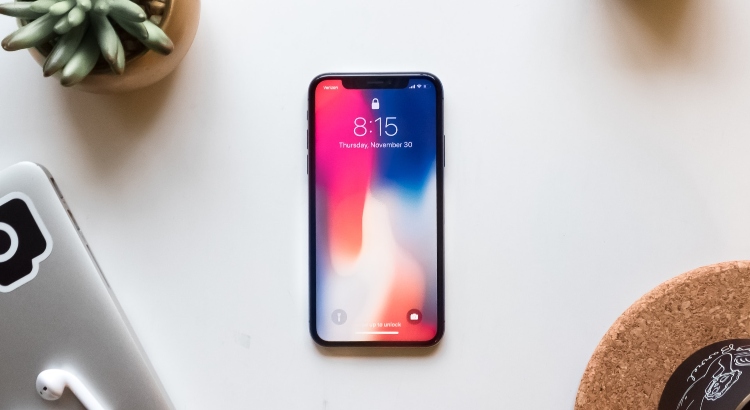How to Record Voice on iPhone: A Step-by-Step Guide
Recording audio on your iPhone is simple and effective. Whether you want to capture lectures, interviews, music, or personal notes, your iPhone provides high-quality tools in your pocket.
This article outlines:
- Why people use iPhones for voice recording.
- How to set up and use your iPhone for clear recordings.
- Best ways to enhance and edit your audio.
- Tips to achieve professional sound quality.
Why Use an iPhone for Voice Recording?
iPhones have become popular tools for voice recording because of their:
- Portability: You can record anywhere, anytime.
- Built-in technology: Every iPhone includes strong microphones and user-friendly apps.
- Affordable solution: No need for extra equipment in most cases.
- Simple sharing: Easily send recordings via email, messaging, or [cloud services](https://gotranscript.com/transcription-services).
Many users—students, journalists, musicians, and business professionals—prefer iPhones for their ease of use and flexibility.
Setting Up Your iPhone for Voice Recording
Optimizing your iPhone before recording ensures better audio results.
Follow these steps:
- Open "Settings" and tap "Voice Memos." Choose "Audio Quality" and select "Lossless" for the highest quality.
- If you have an external microphone, plug it in using the Lightning port or headphone jack for improved sound. But the built-in microphone works well for most needs.
- Close unused apps to avoid interruptions or background noise.
Taking a few moments to prepare helps capture clear and crisp audio.
Recording Voice on iPhone: Using Voice Memos App
The Voice Memos app is built into every iPhone and is user-friendly.
To record with Voice Memos:
- Open the Voice Memos app.
- Tap the large red "Record" button.
- Hold the phone close and speak clearly into the microphone.
- Tap the red button again to stop. The recording saves automatically.
- Replay, trim, rename, or share the audio using the app's options.
Voice Memos is great for:
- Quick notes.
- Lectures.
- Personal reminders.
For detailed editing or advanced features, consider other apps.
Best Third-Party Apps to Record Audio on iPhone
If you need more than basic recording, explore these popular options:
GarageBand
- Best for music makers.
- Includes multi-track recording.
Voice Record Pro
- Records in formats like MP3, WAV, and AIFF.
- Built-in editing and sharing tools.
- Option to transcribe audio with [audio-to-text services](https://gotranscript.com/transcription-services).
iTalk Recorder
- Easy sharing.
- Lets you pause and resume recording.
- Add notes to audio files.
QuickVoice Recorder
- Useful for students and business notes.
- Record long lectures or meetings.
- Send recordings as email attachments.
Recorder Plus
- Designed for professional use.
- Offers noise reduction and stereo recording.
- Share files directly to cloud storage.
Rev Voice Recorder
- High-quality audio output.
- Built-in noise cancellation.
- Allows easy export and sharing.
Choose the app that best fits your requirements, such as format options, editing tools, and sharing abilities.
Tips for Achieving Great Audio Quality
Small changes can make a big difference. For the best recordings:
- Use a quality microphone: Consider an external mic like the Shure MV88 for professional results.
- Pick a quiet location: Find a space away from distractions and background noise (CDC recommends quiet spaces for optimal communication, 2021).
- Wear headphones: Reduces echo and helps you monitor your audio in real-time.
- Speak clearly: Project your voice at a steady volume. Avoid mumbling or shouting.
- Choose the right file format: MP3 and WAV are common; use WAV for highest quality, MP3 for size-efficient sharing.
- Test first: Record a short sample to check audio levels before starting.
Editing and Enhancing iPhone Recordings
Editing ensures your audio sounds its best. Use built-in or third-party editing tools.
Simple editing steps:
- Trim unwanted parts using the app's edit feature.
- Increase or decrease volume (gain) for balance.
- Add fade-ins and fade-outs for smooth starts and ends.
- Apply noise reduction filters to minimize background sounds.
- Save backups before major edits to avoid data loss.
Advanced audio cleaning and [proofreading](https://gotranscript.com/transcription-proofreading-services) services can further improve clarity.
How to Transcribe and Share Your iPhone Recordings
After capturing important audio, you may want a text version.
To transcribe:
- Export audio from your app to your computer or directly to a [transcription service](https://gotranscript.com/transcription-services).
- Choose a [manual](https://gotranscript.com/transcription-services) or [automated transcription](https://gotranscript.com/automated-transcription-services) option. Manual transcriptions are more accurate (Stanford HAI, 2022).
You can also:
- Use [closed caption services](https://gotranscript.com/closed-captioning-services) for videos.
- Generate [subtitles](https://gotranscript.com/subtitling-services) for multi-language presentations.
- Share audio or text files using email, cloud storage, or direct uploads.
Cost-Effective Recording and Transcription Solutions
Recording and transcription do not have to break the bank. iPhones, free apps, and low-cost [transcription pricing](https://gotranscript.com/cheap-transcription-rates) or [captioning pricing](https://gotranscript.com/cheap-captioning-rates) make the process accessible.
Summary: Make the Most of iPhone Voice Recording
Recording voice on iPhone is easy, portable, and reliable. With the right settings and apps, you can capture anything from lectures to creative ideas in minutes. Focus on sound quality, use editing features, and choose the best way to share or transcribe your audio.
If you need accurate, affordable, and fast [transcription](https://gotranscript.com/transcription-services), [audio translation](https://gotranscript.com/audio-translation-services), or [captioning services](https://gotranscript.com/closed-captioning-services), GoTranscript offers full support. Try their [AI transcription subscription](https://gotranscript.com/ai-transcription-subscription) or [order transcription](https://gotranscript.com/upload/transcriptions) directly for your next project.
With the right tools and services, your iPhone recordings can be clear, professional, and useful every time.



















 Verified Order
Verified Order